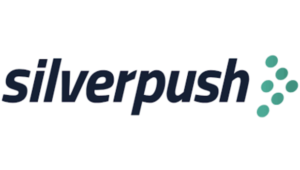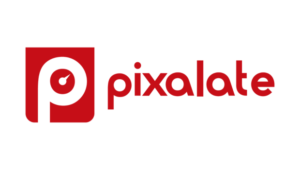Recapturing the Lost User of Online Advertising
by Sonja Kroll on 7th Dec 2015 in News

With huge advances being made in technology that delivers advertising, why are online ads not engaging with users? Niki Stoker, client services director at Scoota, (pictured below) argues that it’s time to get creative.
So, you’re on Facebook and scrolling through the posts when up it pops for the hundredth time: another ad for the hotel you’ve just been viewing on Expedia, and rather than thinking again about booking said holiday, all you feel is irritated.
 It still amazes me that this is an all too common scenario users are experiencing when it comes to programmatic advertising. Instead of engaging the user, they are simply becoming bored and frustrated with what seems to be amounting to ‘stalker’ ads.
It still amazes me that this is an all too common scenario users are experiencing when it comes to programmatic advertising. Instead of engaging the user, they are simply becoming bored and frustrated with what seems to be amounting to ‘stalker’ ads.
The user is becoming ‘lost’ in a deluge of pop-up banners, interruptive pre-roll and repurposed TV ads that they don’t want to see or watch. Have we reached a point where programmatic has become problematic?
The latest programmatic technologies enable us to see who the audience is, what they like, what they buy, and where they want to go on holiday – gold-dusted data when it comes to attracting online users to a brand, so no problem there.
And using online behaviour to track and target ads to relevant consumers is a booming business: according to eMarketer, programmatic will increase from a USD$15bn business to USD$27bn in 2017, while the Internet Advertising Bureau (IAB) predicts that up to 80% of all digital ad spend will be programmatic by 2018. The IAB has also found that digital advertising spend figures across online, mobile, and tablets was worth £3.975bn in the first half of 2015, up 13.4% on a like-for-like basis from £3.507bn in the first half of 2014.
So, why is there such massive investment into targeted and non-targeted ads when they don’t deliver as effectively as they potentially could? If the user isn’t engaged, it is all too easy for them to block ads, turn the sound off, or open another tab. And this is the issue: once someone has installed ad blockers, it is very unlikely they will come back or can be re-engaged. And once the commercial viability of online publishers is threatened – the internet model falls over. We’ve all seen the stats: the rise of global monthly ad blocking from 21 million in January 2010 to surpassing 200 million (Adobe/PageFair). Users are making it clear they don’t want to view the ads that are being targeted to them.
And when it comes to the debate around combatting ad blockers, the industry again seems to be leaving the user out in the cold. The focus is too much on the ramifications of ad blocking on the web business model, when perhaps we need to take a step back and focus on whether the needs of the user are being met in the first place. Vivaki’s Marco Bertozzi struck a note recently when he wrote: "If you really want to understand ad blocking you have to look to the youth … [they’re] not moaning about ads sucking their data … they don’t care about any of that. They […] talk about the quality of ads."
In a time of data-driven, multi-platform, multi-screen, and technologically advanced media consumption, why can we not seemingly engage the user with a relevant and creative ad?
Perhaps it’s because online advertising has, by and large, forgotten its creative intentions. Users are simply not engaged with what is being targeted at them. And as an industry we need to collectively get together and push for more investment into the production of genuinely creative and engaging ads.
Not only that, but the very contract underpinning online advertising, that being that high-quality content can only exist because it can be leveraged by advertising – is not being communicated well enough to the emerging generation of users, and, if we don’t pull our creative socks up, users will not see the value of online advertising as a positive, useful and entertaining experience.
So, how can we solve some of the problems with programmatic advertising and rediscover the lost user?
We need creative agencies to get more proactively involved in the digital storytelling itself: who better to work in tandem with the technology to retarget successfully across device with the sole aim of painting a picture or telling a story? We’re all in agreement that understanding and respecting our audience is key; as is trying to be as useful, relevant and, of course, as entertaining as possible. Investing more in production and being ambitious in what we deliver as an industry should be paramount to hauling the gamut of online advertising out of its creative rut.
With the migration from Flash to HTML5, creative flexibility suffered a blow – and it’s only relatively recently that HTML5 creative toolkits have emerged. With the advent of programmatic, tailoring and adjusting content is now mainstream, and ads can now be delivered in innumerable variations according to the targeted user. For example, adjusting the content within the ad along with the initial call-to-action creative can draw in different audiences and engage them. We’re starting to see examples of this being used in intelligent and creative ways: such as the recent Diesel campaign from Spring Creative – where creative variations of the same campaign were served dynamically according to their context, into real time and responsive environments like Tinder and Shazam. The intrusive elements associated with programmatic were replaced with a campaign that felt genuinely entertaining.
Studies have repeatedly found that the intensity and moment of consumer engagement varies across devices, and that each device has unique emotional engagement patterns. Storytelling with the user in mind, rather than with brand first and foremost, is always more impactful. In a recent global campaign we ran for a well-known health tracking brand, we worked closely with the brand, media, and creative agency to create dynamic creative ads which were served in differing ways according to the context of different sites, and capitalising on seasonal touch points like Black Friday and Christmas. So far, we have seen some pretty incredible stats, with interaction rates many hundreds of times the industry norm in some territories.
But these examples are still too few and far between. Despite an abundance of high-quality data, programmatic technologies and increasing online ad spend, the last frontier seems to be an industry-wide coupling of all of this technology with the right creative approach to engage the user.
And until that is done, millions of users are going to continue to be left disillusioned and disengaged, and irrevocably remove themselves from the online advertising equation. At which point any creative endeavours within online advertising could be be too little too late.








Follow ExchangeWire